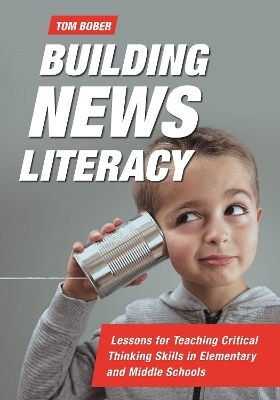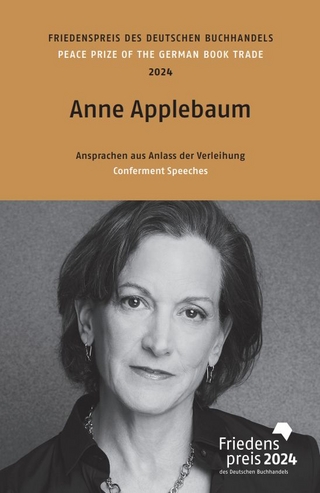
Building News Literacy
Libraries Unlimited Inc (Verlag)
978-1-4408-7515-1 (ISBN)
This book suggests that news literacy is made up of several other literacies and skills that must not only be explored across the subject areas, but also connected to students' real-world consuming and sharing habits. A series of lessons, some using technology, lay a foundation for building these multiple literacies and skills. While not meant to be a complete program, the lessons provide a holistic experience and are adaptable to personalize students' learning.
The author melds strategies for finding and making meaning from information, the multiple literacies that young consumers of news must be familiar with to navigate news and other information, and the digital skills necessary to navigate today's news options. Whether students encounter news in the firewall-protected classroom or pushed out to them on their phones, the series of lessons encourage them to give pause and ask important questions as they move beyond simply consuming to become critical readers of the news.
Tom Bober is an elementary school librarian in Missouri and author of Elementary Educator's Guide to Primary Sources.
Acknowledgments
1—News Literacy in Elementary and Middle Schools?
Where Do Elementary and Middle School Students Get Their News?
Defining News
By Format
By Geography
Hard News and Soft News
By Creator or Reporter
By Legitimacy
Recruiting Everyone in the Effort
What This Book Attempts to Do
2—Challenges to Be Addressed by Developing News Literacy in Students
Reading Digital vs. Print
Trusting the Messenger and the Message
Organizing Facts, Commentary, and Personal Reactions
Instilling the Importance of Reliability and Credibility
Making Sourcing and Contextualizing Automatic
Abandoning Old Approaches to Information and News Literacy
3—News Literacy: Tying Together Multiple Literacies Across Subjects
News Literacy: Made Up of Many Parts
Text Literacy
Visual Literacy
Audiovisual Literacy
Graphic and Geographic Literacy
Comparing News Literacy to Historical Literacy
News Literacy Across the Subject Areas
4—Lessons to Develop News Literacy
Describing the News
Lesson 1: Fact vs. Opinion
Lesson 2: What Is News and What Isn't
Lesson 3: Differentiating Between News and News Commentary
Lesson 4: Reliability and Credibility
News Analysis Strategies
Lesson 5: Sourcing: Taking a First Look at New Information
Lesson 6: Contextualizing: Placing News in the Moment
Lesson 7: Close Reading: Uncovering the Story
Lesson 8: Corroborating Information Across Multiple Sources
Lesson 9: Asking Questions When Interacting with News
Lesson 10: Word Choice in the News
Lesson 11: Voices in the News: Finding Who Is Heard and Who Is Not
Interacting with the News
Lesson 12: Reading Across Headlines
Lesson 13: Curating Sources: Expanding Beyond an Initial View
Lesson 14: Going to the Source: Finding Primary Sources
Lesson 15: Making Connections Between News Topics: Cause and Effect in the News
Lesson 16: Stick with the Story: Following News over Time
Lesson 17: The Quick Share: Sharing, Liking, and Commenting on News
Understanding Oneself and Others as News Consumers
Lesson 18: What Is My Opinion?: Being Aware of Our Own Biases
Lesson 19: Rethinking Relationships: Reflecting on Affinities with News Sources
Lesson 20: Interacting with and Reacting to Emotionally Charged News Topics
Lesson 21: How Will Others Read This?: Predicting Audience Viewpoints
References
Index
| Erscheinungsdatum | 02.02.2021 |
|---|---|
| Sprache | englisch |
| Maße | 178 x 254 mm |
| Gewicht | 227 g |
| Themenwelt | Schulbuch / Wörterbuch |
| Sozialwissenschaften ► Kommunikation / Medien ► Buchhandel / Bibliothekswesen | |
| Sozialwissenschaften ► Pädagogik | |
| ISBN-10 | 1-4408-7515-4 / 1440875154 |
| ISBN-13 | 978-1-4408-7515-1 / 9781440875151 |
| Zustand | Neuware |
| Haben Sie eine Frage zum Produkt? |
aus dem Bereich


